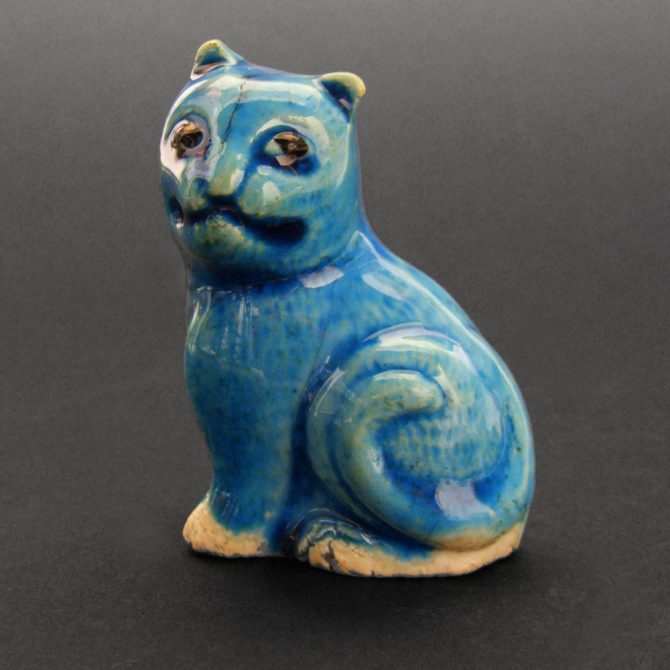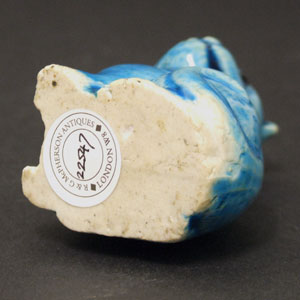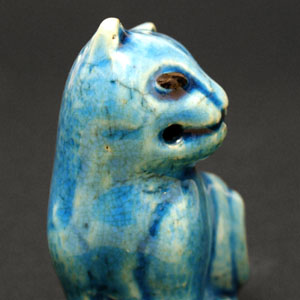
KANGXI or YONGZHENG c.1700 – 1735 Biscuit Glazed Porcelain
An Unusual Biscuit Glazed Early 18th Century Water Dropper Modelled as a Seated Cat, Late Kangxi or Yongzheng Period c.1700 – 1735. This Biscuit-Porcelain Turquoise Glazed Model of a Cat has the Fur Incised Beneath the Glaze and the Eyes Picked out in Black, there is a Hole to the Left Side of its Mouth to Drop Water from . Depictions of Cats are Only Rarely Depicted in Chinese Ceramics.
SOLD
- Condition
- Good, a fine glaze crack to the body and a tiny chip to the front back paw, numerous firing cracks.
- Size
- Height : 6.6 cm (2 1/2 inches)
- Provenance
- N/A
- Stock number
- 22547
Information
Turquoise Glazed Biscuit Porcelain :
Chinese porcelain with a turquoise glaze over a biscuit body was exported to Europe from the Kangxi period (1662-1722) onwards. The bright turquoise colour with a clear shiny glaze was like nothing produced in Europe at the time. Turquoise glazed Chinese porcelain was especially popular in France during the 18th century and to this day many pieces can be found in French private collections. French taste in the second quarter of the 18th century tired of Chinese blue and white porcelain, indeed by this time France was producing it`s own blue and white porcelain at St.Cloud among other factories. Collectors like the duc d`Aumont had a large collection of monochrome Chinese porcelain, with celadons as a favourite. They were made more French by the addition of ormolu mounts, 43 % of his collection had mounts.
Cats in China :
Cats are rarely depicted on Chinese porcelain, however they can sometimes be seen in the depictions of domestic settings. They are very rarely depicted on there own, but in this context the meaning conveyed is often that of longevity, because the Chinese name for a cat, Mao, is homonym for seventy. Cats are not indigenous to China but were introduced from the Middle East.


